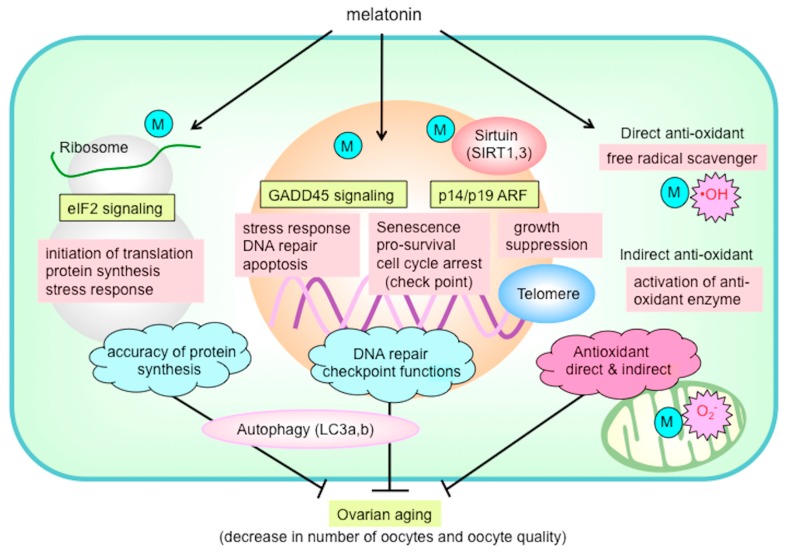Figure 4.
The possible mechanism of melatonin to prevent ovarian aging. Melatonin is likely to reduce ovarian oxidative stress not only by its direct action as a free radical scavenger but also by its indirect action of enhancing the antioxidant enzyme activity. Melatonin enhances eukaryotic initiation factor 2 (eIF2) signaling, which is essential for translation initiation and protein synthesis in ribosomes, and growth arrest and DNA-damage-inducible 45 (GADD45) signaling, which is involved in DNA repair and checkpoint functions. Melatonin also suppresses autophagy-related protein (light-chain 3a, 3b: LC3a, LC3b) by enhancing intracellular pathways including eIF2, GADD45, and alternative reading frame (ARF) pathways. The mRNA expression of sirtuin longevity genes (SIRT1, SIRT3) and telomere length were also enhanced due to melatonin treatment. Melatonin delays ovarian aging by multiple mechanisms including antioxidant action, DNA repair, maintaining telomeres, SIRT family activity, ribosome function, and autophagy. M: melatonin; O2•−: superoxide anion; OH: hydroxyl radical

